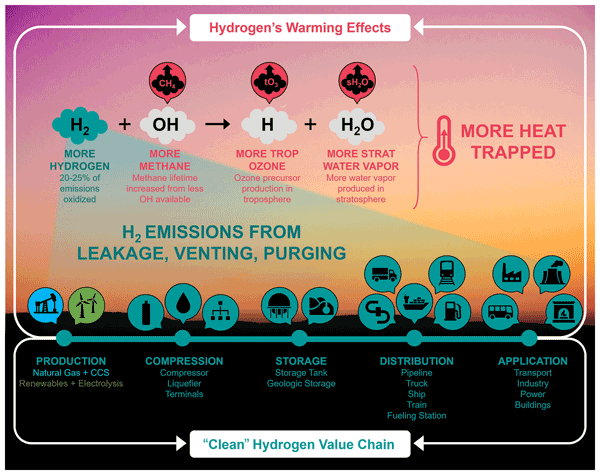 The Biden administration is spending
billions
on the National Clean Hydrogen Strategy, even recently celebrating
Hydrogen
Day
on October 8 (because hydrogen’s atomic weight is 1.008) to “mark a
symbolic opportunity to celebrate hydrogen—clean hydrogen,
specifically—and the crucial role this element plays in supporting a
robust, equitable clean energy future for all Americans.”
The Biden administration is spending
billions
on the National Clean Hydrogen Strategy, even recently celebrating
Hydrogen
Day
on October 8 (because hydrogen’s atomic weight is 1.008) to “mark a
symbolic opportunity to celebrate hydrogen—clean hydrogen,
specifically—and the crucial role this element plays in supporting a
robust, equitable clean energy future for all Americans.”
“There’s a lot to like about hydrogen as a fuel source,” climate journalists such as David Gelles gush.
The only problem is that “clean hydrogen,” also known as “green hydrogen”—that is, hydrogen gas generated using renewable electricity—isn’t particularly “clean” or “green,” although it’s less polluting than “gray” and “blue” hydrogen, produced from natural gas.
Unfortunately, even “green” hydrogen is a powerful greenhouse pollutant.
As an important paper from Environmental Defense Fund scientists Ilissa Ocko and Steven Hamburg explains, hydrogen is unavoidably leaky, because it’s such a small molecule, and like methane, has a high short-term warming effect. In fact, one of hydrogen’s main warming effects is to increase the atmospheric lifetime of methane. Methane breaks down in contact with the hydroxyl (OH) radical formed when ultraviolet light interacts with ozone (O₃) and water vapor (Hâ‚‚O). Hydroxyl also reacts with hydrogen molecules (Hâ‚‚), so significant hydrogen pollution means atmospheric methane doesn’t break down. Thus, Ocko and Hamburg find:
Hydrogen’s 100-year greenhouse warming potential (GWP) is twice as high as previously thought, and its 20-year GWP is 3 times higher than its 100-year GWP. Hydrogen’s maximum GWP occurs around 7 years after the initial pulse of emissions, with a range of 25 to 60 based on uncertainties, and a central estimate of 40.
In short, “green” hydrogen isn’t.